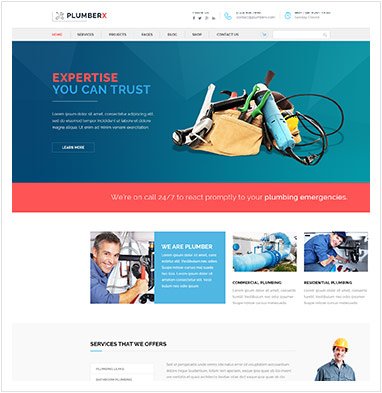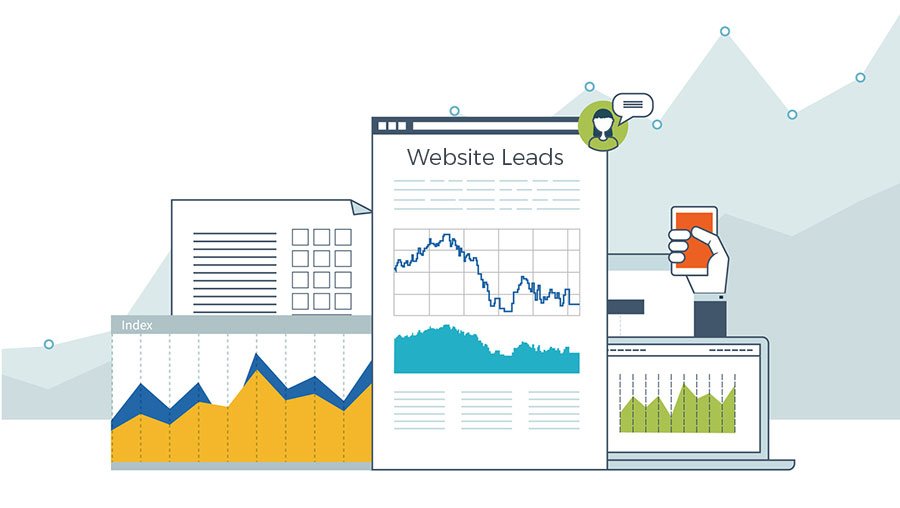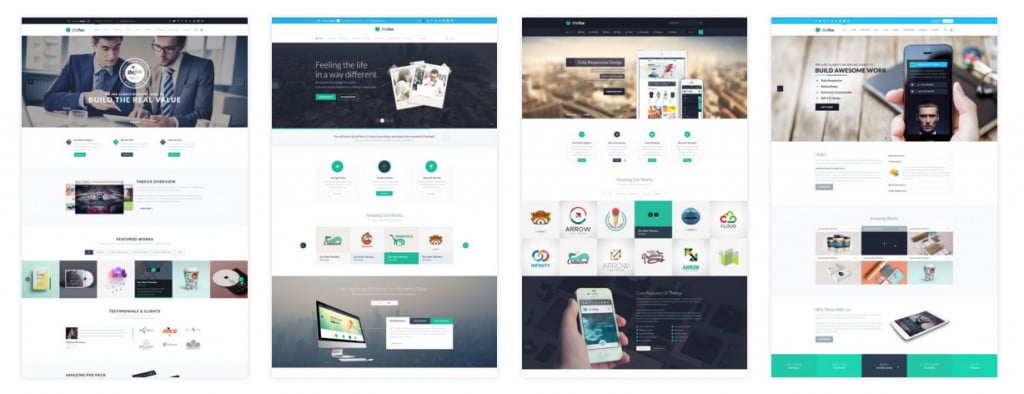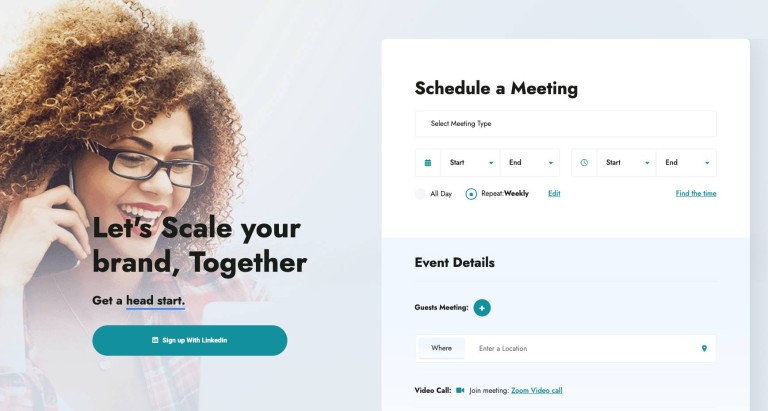Selecting the right WordPress theme for a business can be tough, and unfortunately, most users get it wrong the first time.
Most WordPress themes are not actually designed to help win customers; they're designed to sit there, look pretty at first, and then stagnate rapidly.
On the bright side, you’re already a winner for picking WordPress as your CMS, so let’s go ahead and try to filter through the 10,000+ shiny options to find the few that actually work.
Think of theme demos as carefully staged homes.
Everyone flocks to the open house with the perfect lighting, curated furniture, and freshly baked cookie smell. But once you move in, bring in your own furniture, your brand, your content etc., suddenly, you notice the cracks in the foundation.
That gorgeous homepage slider? It tanks your load time.
Those animated icons? They stop working after the first plugin update.
And that “modern layout”? Turns into chaos the minute you swap demo images for real photos.
And that fancy form? If you can get it to work properly on mobile, it drowns you in spam.

Now before we proceed, let's assume you want to customize the theme and seamlessly adapt it to the business's brand and content. Most organizations do not want their website to look like 100,000 other websites out there, and presumably, you’re not looking for a cookie-cutter template either.
However, if you are looking to just install a theme, swap out the text, and call it a day, then this post is probably not for you.
But if you actually want your website to convert, to drive leads, generate revenue, and keep working long after the “new site smell” fades, then it’s time to choose your theme strategically.
No matter what, stay conversion focused.
There are a lot of misconceptions about website templates and their purpose. Every web developer has their own theories and opinions about some of the items you should consider when selecting a WordPress theme. Keep in mind that generally, it’s in the web designer’s best interest to do as much custom design work as possible, and it’s in the developer’s best interest to code as many features as possible - that’s understandable.
I only care about one thing: ROI.
If your website is built ultra-efficiently, and it’s effective in generating leads for your business now and in 2 years, and maintenance does not cost an arm and a leg, then I consider the project a success. Theme selection should take this into account.
Right now, there are thousands of WordPress themes available and choosing one may seem overwhelming, but it really isn’t. We can easily filter out 99.99% of them.
Here are 5 mayor factors you should consider when selecting a WordPress theme for your business (some of them you might never guess!). Let’s get started:
1. Your theme does not have to be industry-specific.
This one surprises people every time.
Many businesses feel they need a website template specific to their industry. Law firms tend to search for lawyer templates, doctors will go for medical templates, construction companies will go for construction templates, financial consultants will go for the finance-oriented templates and so on. Stop it for the love of WordPress!

Theme designers are not generally catering to help your business, at least not directly. They’re catering to blind demand, and they love high turnover. Think fast fashion. When a niche opens up for say – dentist themes – you’ll have a bunch of suppliers pumping out themes specifically designed for dentists – complete with built-in dentist stock photos, dental icons, and perhaps even an appointment booking form.
What’s wrong with that?
By focusing on industry aesthetics, we lose sight of what’s most important: the quality of the underlying code, the theme’s back-end performance, and the extent to which you or your web developer can customize and maintain it, along with the theme’s future support outlook.
Back to the home staging analogy: industry-specific themes all have the same bloated, short shelf-life code! There's nothing substantial that makes a "Doctor" theme different from a "Lawyer" theme other than stock photos and iconography.
These themes often rest on low-quality frameworks with beautiful artwork sitting on top to distract you. Stay away, unless the theme’s backend has a proven track record.
When in doubt, prioritize framework quality over aesthetics. A fast, stable foundation will outlast every gimmicky “industry-specific” theme in the marketplace.
2. Invest in a long-term framework, not a disposable template
Most WordPress themes don’t die because they’re inherently “bad.” They die because they age out.
The developer moves on, support fades, and what was once a shining 5-star theme becomes abandonware with 200 unanswered comments on ThemeForest.

That’s why you shouldn’t be choosing a theme based on looks alone; you’re choosing a framework that will power your business for years.
In 2026, this means focusing on:
The inconvenient truth: the average theme’s life cycle is 2–3 years before it either breaks compatibility or gets replaced.
And here’s the kicker: most users don’t even adopt a theme until it’s already at the peak of its life cycle. That means they’re not getting the full 2–3 years. They’re getting half of that, on average.
So, the real goal isn’t to make your website “last forever.” That’s not realistic (and frankly, not even a good idea for a growing business). What you should expect is to double the average lifespan by starting with a strong, modular framework that won’t fall apart with every WordPress core update.
Of course, tech moves fast, so when something new breaks through (like block-based builders, new CSS frameworks, or new accessibility standards), don’t blame your developer for not predicting it in 2021. We’re good, but we’re not psychic.
And yes, every now and then you’ll meet that one outlier proudly running a 10-year-old website “that still works.” Technically, it exists. It loads. It hasn’t been hacked (probably because no one’s even trying anymore).
But let’s be honest: that site isn’t thriving. It’s surviving. You can’t update it easily. You can’t integrate new tools or optimize conversions. It’s basically digital taxidermy - preserved, but not alive.
If that’s your benchmark for “working,” you’re aiming way too low. A truly strong WordPress framework doesn’t just exist over time; it evolves with your business.
3. Check the theme’s popularity and its update history
In the WordPress world, popularity isn't inherently good or bad, but it's usually a survival signal.

While it may seem counter-intuitive for some, your perfect theme may already have thousands of downloads, and that’s ok. This does not mean your website will look like thousands of other sites out there. On the contrary, amazing themes are highly customizable.
Often users will select lesser-known themes (especially if they're selecting by industry) thinking their website will stand out more. While even great theme developers have to start somewhere, there’s always a risk in selecting something that hasn’t been tested enough.
Here’s what to look for when sizing up a theme’s longevity:
Pro tip: Don’t just look at popularity — look at momentum.
A theme that’s rising is a safer bet than one that peaked years ago and has been on life support since.
Another important caveat:
“Longevity” in the marketing sense (a theme that’s been “around for 10 years”) is not the same as longevity in production (your site actually staying functional and future-proof during that time).
Themes like Avada, X Theme, Enfold, BeTheme etc. and even builders Divi, Elementor etc. love to advertise their history and massive install base. But that doesn’t mean the original framework from 2015 or even 2020 still holds up today.
Those “updates” often include entire structural overhauls, deprecated shortcodes, or redesigned builders that make old content incompatible. So while the theme technically kept evolving, your site didn’t evolve with it, it broke.
And honestly, there’s nothing wrong with rebuilding foundations every few years; technology moves fast.
What’s wrong is pretending that “lifetime updates” mean lifetime stability.
If the developer is transparent about what’s changing, great. But most aren’t, and that’s how businesses get blindsided by massive rebuild costs they didn’t budget for.
If you’re unsure how to tell whether a theme is aging gracefully or quietly falling apart under the hood, here’s a quick cheat sheet to spot the difference:
5. Understand that Most Themes are not Built for Businesses
While aesthetics are no doubt important in a Theme, it’s critical to look at substance over gimmicky features. Most themes are not built to help your business. We have to customize them to convert well by adding great content and lead generation tools.

Look past the “fluff.”
While many high quality themes have built-in features that are extremely useful: content editors, layouts, pricing tables, portfolios, testimonials and design elements, there are other features that are just fluffy fluff: sliders, scrollers, special effects and 99 design elements you probably won’t use.
Worst offender: all the special effects and useless widgets. These are conversion killers and a waste of time. They slow down your website and distract visitors from their goal. Not to mention, they make your backend clunky and harder to maintain.
Furthermore, for many theme features, better alternatives exist.
Lots of built-in features have alternative plug-ins out there that can do the job 3x better. Perfect example: photo galleries.
Remember your website’s job is not to compete for who has the highest amount of features and widgets. Your website's job is to convert visitors into customers.
In the end, it’s all about maximizing results. If you plan on becoming really active online in terms of online marketing, blogging, & content development (which you should), it’s well worth the investment into a more solid framework from the start.



